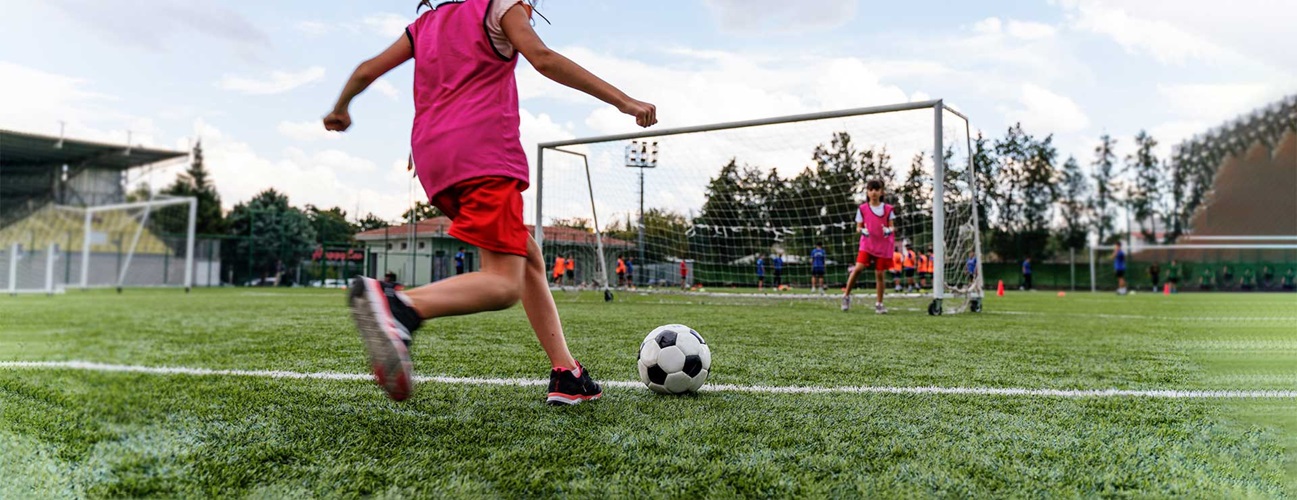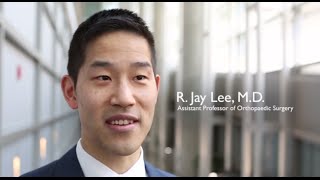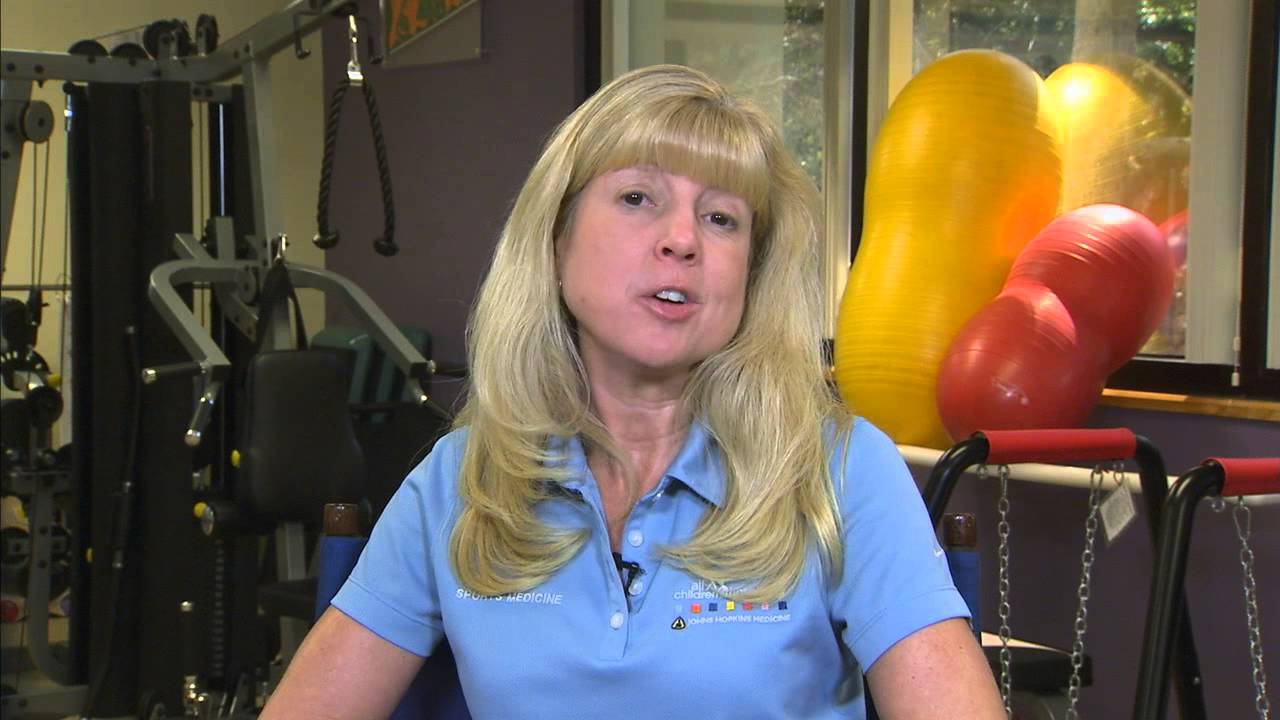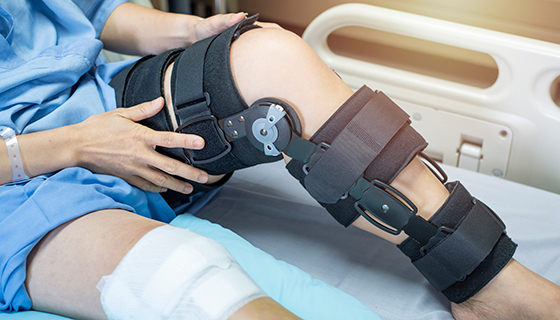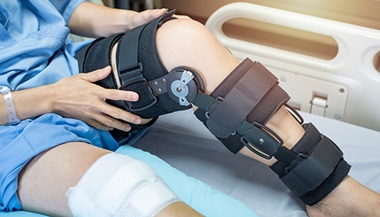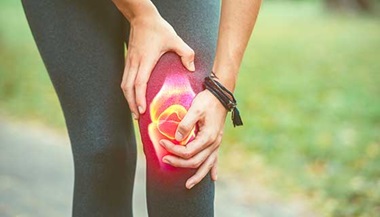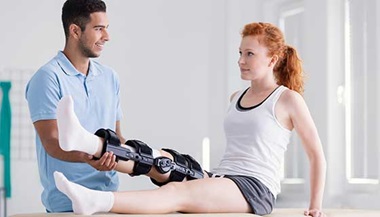ACL Tears in Children
Treatment of anterior cruciate ligament (ACL) injuries in children is complicated by growth plates. However, multiple nonsurgical and surgical solutions exist for treating the ACL without impact on the child’s knee growth.
What You Need to Know
- ACL injuries have become increasingly common in children and teens, and girls are more likely to get them than boys.
- Children can injure the ACL during sports and other activities that include abrupt stopping, quick change in direction, jumping and similar movements that stress the knee.
- The presence of growth plates is the key difference between ACL injuries and their treatment in children versus adults.
- Due to advances in technology and surgical approaches, it is no longer necessary to delay surgery until the child is done growing. In fact, delaying surgery can lead to more knee damage, including tears of the meniscus cartilage and other cartilage injury.
What are ACL tears in children and how do they happen?
As kids grow up, they become more active and can injure their anterior cruciate ligament (ACL), which plays an important role in the knee’s movement and stability.
ACL sprains and tears are among the most common knee injuries and can occur in children, teens and adults. During recent decades, there has been a rise in ACL injuries among younger people.
The most frequent type of ACL injury is a complete ACL tear — the ligament separates into two pieces or is torn off the bone. ACL injuries are frequently accompanied by injuries to other parts of the knee, such as meniscus tears and injuries and damage to other cartilage and ligaments.
Due to differences in anatomy and mechanics, girls are two to eight times more likely to tear an ACL than boys.
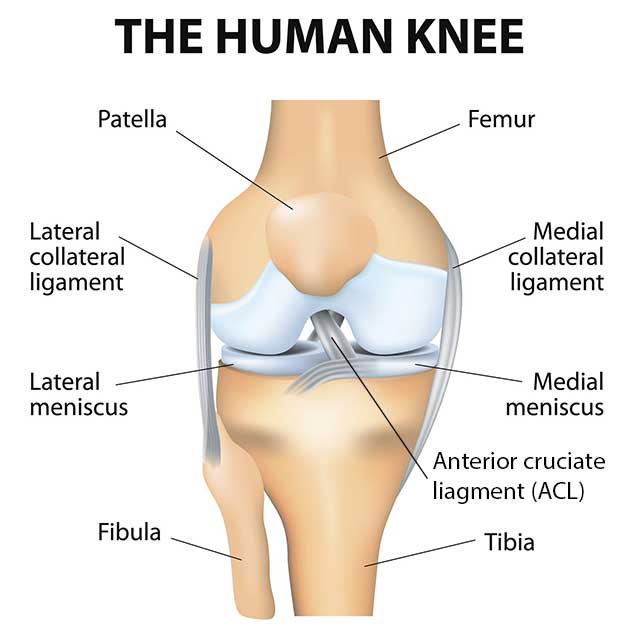 Anatomy of the knee
Anatomy of the knee
How can a child tear the ACL?
ACL injuries typically happen when children play sports, such as football, basketball or soccer, or participate in other activities that increase stress on the knee. There are many ways a child can injure the ACL, including:
- Landing incorrectly from a jump.
- Pivoting with one foot firmly planted or abruptly changing direction.
- Suddenly stopping or slowing down while running.
- Direct contact or hit to the knee, such as a helmet to the knee during a football tackle.
ACL Injuries | Q&A with Dr. Jay Lee
Are ACL injuries in children different than adult ACL injuries?
A child’s body is not simply a smaller version of an adult’s body. There are anatomical and other differences between the two, which may affect the injury’s severity and the treatment approach.
The primary difference is growth. Children who are growing have an area at the end of their long bones called physis (growth plate), which allows the bones to grow. This area is vulnerable during both injury and treatment, because the ACL is attached to the ends of the thigh and shin bones. A fracture of the physis is uncommon, but it is one of the factors that can make an ACL injury more severe in a child than in an adult. More commonly, the physis is injured when using standard adult surgical techniques for ACL treatment in children. Surgery techniques should be modified to help ensure the treatment does not affect the child’s growth.
Other considerations include the healing potential of the injuries that accompany the ACL tear. The meniscus has more blood flow in younger children, so healing potential is greater than for adults. Every attempt should be made to repair the torn meniscus in children rather than remove it. Fractures involving cartilage attached to bone are also more likely to heal in children and, therefore, should be repaired. Preserving both the meniscus and cartilage can help prevent early arthritis in children with ACL injuries.
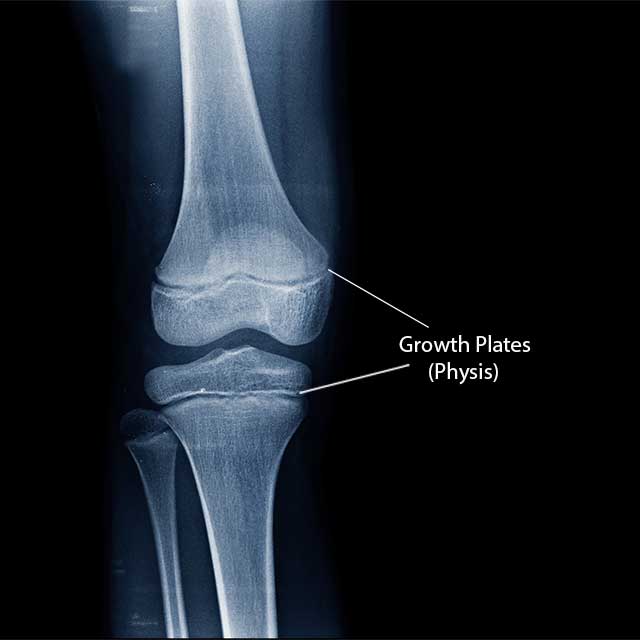 This X-ray of a child’s knee shows the location of the growth plate (physis).
This X-ray of a child’s knee shows the location of the growth plate (physis).
What are the symptoms of an ACL injury in a child?
Some symptoms occur at the time of injury and others continue over time. Symptoms include:
- Immediate pain or other sensation in the knee.
- A snapping or popping sound.
- Swelling around the knee within 24 hours of the injury.
- Inability to continue playing.
- Loss of full range of motion in the knee.
- Instability when walking.
- Inability to put weight on the knee.
What should I do if I suspect my child has an ACL injury?
If the child or teen has sustained a knee injury, you can take these immediate steps:
- Stop the activity or sport and let the child rest.
- Ice the knee to ease discomfort.
- Wrap the knee with an elastic bandage or compression wrap to provide some compression.
- Elevate the knee over a pillow to reduce swelling.
- Give the child over-the-counter pain medication as needed.
Not all knee injuries result in ACL tears. Only medical professionals can diagnose the problem.
When to See a Doctor
Visit an urgent care clinic or an emergency room if:
- The child has severe pain and swelling.
- The leg is turning blue and feels cold.
- The knee looks bent or twisted.
During this visit, doctors will identify or rule out a serious injury such as a dislocation, fracture or compartment syndrome.
Consult with a pediatrician if the child’s injury does not respond to first aid or if the condition worsens. A pediatrician can perform a physical exam and order an X-ray or MRI to diagnose the injury.
Meet with a pediatric orthopaedic or sports medicine specialist if the pediatrician suspects or diagnoses an ACL tear. These specialists can further evaluate the injury and recommend treatment options.
How are ACL tears diagnosed in children?
A doctor may use some or all these methods to diagnose an ACL tear in a child:
- Physical exam that compares the injured knee with the healthy one, looking for differences in appearance, alignment and function. The doctor will likely use the Lachman test, which looks for abnormal movement in the bones of the knee.
- X-ray is used to rule out other injuries that may have similar symptoms to an ACL tear, such as fractures.
- MRI is used to confirm damage to the ACL and to see other injuries.
X-ray and MRI can also help doctors assess the growth plates and see how much growth a child has left.
What are the treatment options for a pediatric ACL tear?
A pediatric orthopaedic specialist can evaluate a child’s condition and develop a custom treatment plan. A major factor in selecting the treatment approach is determining whether the injury has led to knee laxity (looseness) and instability.
Treatment options for pediatric ACL tears include physical therapy, bracing, activity modification and ACL surgery. To provide a well-rounded approach, a treatment plan may include a combination of nonsurgical and surgical options.
Nonsurgical Approaches
Children who have partial ACL tears, and those who are less active and who participate in less demanding activities, can benefit from a combination of nonsurgical options to treat the ACL injury, such as:
- Activity modification, which includes avoiding high intensity activities that require quick, pivoting movement, many playground activities and sports other than running, swimming and biking.
- Immobilization with a knee brace to protect the knee from instability.
- Rehabilitation exercises and physical therapy to help restore knee function and reduce the risk of future tears.
However, research shows that if the knee is loose and unstable, nonsurgical treatment can lead to further damage such as meniscal and other cartilage injury and early osteoarthritis.
How to Know If Your Child Needs ACL Surgery
An orthopaedic surgeon considers a child’s age, skeletal maturity, activity level and other factors to determine the best treatment. Surgery may be recommended for active children who participate in regular sports or other physical activity and place higher demand on the ACL.
Key factors that may warrant surgery include:
- Severe and persistent knee pain.
- No improvement after nonsurgical treatments.
- A recurrent feeling of knee instability, and the knee gives way with daily activities.
- Additional injuries such as meniscus tears, that need to be surgically repaired.
In some cases, surgery is recommended as the first line of treatment. While it was previously advised to wait until a child’s growth plates close to avoid growth complications and bone deformities, new research shows that delaying treatment can be damaging in the long run. The risks of delaying surgery include meniscus tears and cartilage damage, which can lead to early arthritis. Surgical techniques have advanced to allow ACL repair with no or minimal impact on the growth plates.
ACL Surgery for Children
In the past, surgeons modified adult techniques to use for children. This often led to torn grafts and failure to completely stabilize the knee, creating complications and growth disturbances.
Today, innovative surgical techniques offer young athletes safer ACL reconstruction with less risk of complications. Pediatric ACL surgery is tailored to the amount of growth a child has left.
In most cases, during ACL reconstruction, a graft is used to serve as the new ACL. In general, grafts can be taken from elsewhere in the body or from a donor. Research shows that children benefit from grafts that use the body’s own tissues — donor grafts are prone to tearing in kids over time. Common tissues used as ACL grafts for children and teens include the hamstring tendon, quadriceps tendon, patellar tendon and the iliotibial band.
Depending on the type and severity of a pediatric ACL tear, there are a few ways to reconstruct the ACL:
- Repair. Complete tears where the ACL is torn off the bone can sometimes be repaired by re-attaching the ACL and restoring its tension.
- Supplement. If some of the ACL is still attached and is healthy, it can be supplemented and reinforced with a graft, which preserves some of the nerve endings.
- Replace. If the ACL is damaged beyond repair, surgeons can clear out damaged tissues and replace the ACL with a graft.
Safer Procedures Involving the Growth Plate
With the traditional approach to ACL reconstruction, tunnels are drilled through the bone and the graft is attached with screws that go through the growth plate. This creates the risk of uneven or stunted bone growth. To minimize disruption of the growth plate, surgeons:
- Drill tunnels at an angle thanks to advances such as retractable drill heads.
- Use alternatives to screws such as suture-based fixation systems.
- Avoid grafts that have a bone component.
Approaches involving the growth plate can be appropriate for older children who are mostly done growing.
Growth Plate-Sparing ACL Reconstruction
Children who still have a lot of growth left could benefit from ACL reconstruction that does not affect the growth plate. Several growth plate-sparing ACL reconstruction techniques are available to replace a torn ACL in a way that does not interfere with the child’s growth. The main surgical strategies focus on:
- Attaching the graft without drilling tunnels and placing screws. This can be achieved by using the child’s iliotibial band (IT), which is fibrous tissue that runs along the side of the thigh. The IT band is attached to the shin bone just below the knee. Surgeons separate a piece of the IT band, loop it through and around the knee joint, and secure it with sutures to the thigh bone and shin bone. This solution does not fully re-create the anatomy of an ACL, but it has been shown to be durable into adulthood and provide more support to the knee than traditional ACL treatments.
- Securing the graft in a way that does not cross paths with the growth plate. This can be achieved by placing the graft and hardware that secures it below the growth plate and orienting the drilled tunnels more horizontally. This procedure places the new ACL closer to where it was originally.
Pediatric ACL Surgery: What to Expect
An ACL surgery is typically a same-day procedure, meaning the child can have surgery in the morning and go home in the afternoon. The child should expect to miss about five days of school to allow for the surgical cuts to heal and pain to subside.
- Preparation: Before the surgery, the child’s surgeon may prescribe physical therapy to strengthen the muscles around the knee and to work out stiffness, both of which will help during recovery.
- Surgery: The surgery is performed with the child asleep under anesthesia. Surgeons typically use minimally invasive arthroscopic approaches, meaning there are a few smaller incisions instead of one large incision.
- After the surgery: For a few weeks after surgery, the child will wear a knee brace and use crutches. The leg may need to be elevated and iced periodically to help the tissues heal. The surgeon will prescribe medications to reduce the pain.
- Rehabilitation: Physical therapy starts a few days into recovery. The exercises focus on rebuilding strength and flexibility in the knee. A physical therapist develops a customized care plan that includes goal setting, ongoing assessment of knee function, tailored exercises, and recommendations about when to start bearing weight and increasing physical activity.
- Long-term recovery: Overall, ACL surgery is very successful in restoring knee stability and returning the child to the activity during which the injury took place. Young athletes typically return to light sports-specific drills six months after surgery and full sports nine months after surgery. The doctor may recommend that a knee brace continue to be worn during sports for a few years.
- Follow-up care: To make sure there are no growth disturbances, many patients return for annual follow-up visits until the growth plates close.
ACL Rehabilitation at Johns Hopkins All Children's Hospital | Q&A with Kimberley Carson, PT
ACL Tear Prevention in Children
While some injuries cannot always be prevented, there are often ways to reduce the risk. ACL injury prevention requires a comprehensive effort from athletes, coaches and parents — especially for young athletes who are still learning about their limits. Since more than 70% of ACL injuries are noncontact injuries, taking a proactive approach to training can make a difference and keep children in the game.
Training programs to reduce the injury risk focus on improving strength, balance, coordination and muscle control, as well as on practicing proper body mechanics depending on the sport. A child learns correct running, jumping and landing techniques to strengthen the hips, core and hamstrings.
Kids should be encouraged to cross-train and to play a variety of sports to exercise multiple muscle groups and limit overuse of any area.
Encouraging a healthy lifestyle through a combination of good habits, a well-balanced diet, a healthy weight and good cardiovascular health can also help lower the risk of injuries.
Re-Injury prevention
Children who have torn an ACL are at higher risk of having a second ACL tear in the same or opposite knee. Though five out of six children never have ACL problems again, one out of six children will have another ACL injury.
After an ACL tear and surgery, it is important to wait until the knee is fully recovered, at about the nine-month mark, before returning to previous activity levels. In the long term, it is important to maintain the strength and conditioning in both knees gained from ACL rehabilitation.

